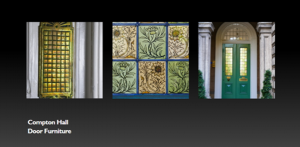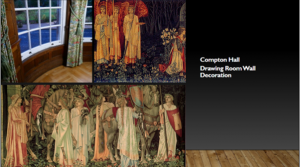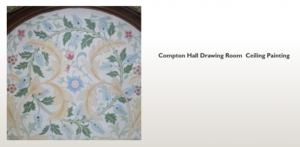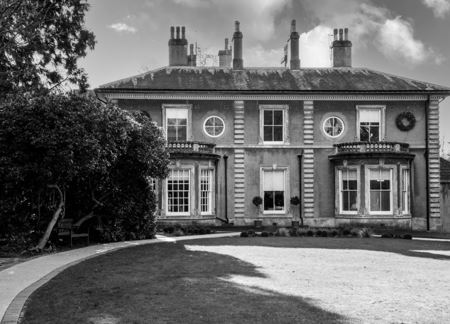Hilary Boucher Presentation
Laurence William Hodson of Compton Hall, Wolverhampton
Hilary Boucher, Chair of the Arts Society Wolverhampton, has spent some considerable time researching the life of Laurence. Hilary introduced us to a man who loved and appreciated the finer things in life. His father William Hodson part owned the successful Springfield Brewery and Laurence grew up working for his father.
In 1893 Laurence became Managing Director of Springfield Brewery and decided to employ Morris and Company to take over the decoration of Compton Hall which he had inherited from his father in 1890.
The fashion for highly decorated homes led to the rising popularity of William Morris who had started his company, together with Ford Madox-Brown, Rossetti and Burne-Jones designing fabrics, tapestries, wallpapers, and stained glass. William Morris based his designs on nature using natural features and medieval themes.

In the late Victorian period decoration, especially where it was likely to be on view, was regarded as a mark of your standing in the community and as Laurance was an important man of the time he embraced the style of Morris and Company. As a result and after much correspondence between them, William Morris eventually travelled to Compton Hall to discuss the decoration of the Hall. It was an excellent commercial opportunity and some of the beautiful craft-work employed can still be seen today there today at Compton Care, especially in the Drawing Room (The Stephen Moreton Room).

Laurence was a town councillor and Chair of the Fine Art Committee. He heavily invested his time, energy and money into promoting a Special Exhibition which was held at Wolverhampton Art Gallery in 1902 showing the work of the traditional artists of the day: Turner, Hogarth, Rossetti, Gaskin to name but a few.
Sadly, the Exhibition was not well supported and had closed by the November of 1902. This combined with difficulties at the Brewery, led to Laurence experiencing some financial difficulties requiring him to realise the sale of many of his artworks acquired over time. Hilary has indexed and catalogued the artworks that were subsequently sold by Laurence at Christies in order to get funds.
For example Laurence had a set of Holy Grail Tapestries which were sold to Morris and Co for £310, which were then sold on to Birmingham Museum and Art Gallery the following year for more than £1000. Finally, Compton Hall was then sold in September 1906.

In his later years Laurence and his family moved to Abersoch and then the family eventually settled in Derbyshire. Laurence died in 1933.
We thank Hilary for a splendid and very informative presentation and if you would like to find out more about Laurence and his collection of art and of Compton Hall, she has written an article which can be accessed via the article below.
